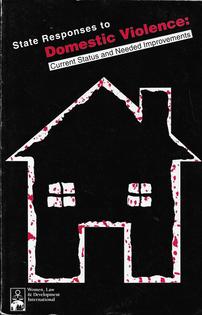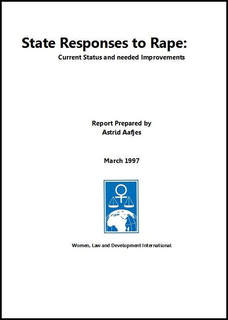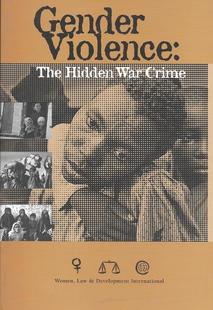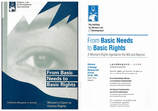The Special Rapporteur on Violence against Women
Research on State Responses to Gender Violence
In June of 1993 domestic violence catapulted to the fore of the human rights agenda at the World Conference on Human Rights held in Vienna. A new surge in the literature on the subject, coupled with the relentless work of women’s rights activists worldwide who mobilized around the issue, helped to focus international governmental attention on a previously shrouded global epidemic.
Now that the issue of domestic violence had been exposed as a human rights violation, the international community was called to confront not only the sheer magnitude of the problem but also the logistical complications of finding appropriate UN mechanisms to address the issue within the human rights framework. One initiative towards addressing domestic violence was the appointment in 1994 of the UN Special Rapporteur on Violence Against Women by the UN Commission on Human Rights. This appointment was seen a major victory for women’s rights activism. At WLDI, we were particularly pleased that the person named to this position was Radhika Coomaraswamy, our friend and colleague who had been instrumental in developing the WLD Forum in 1984, APWLD in 1986 and WLDI after that as a board member.
Part of the Special Rapporteur’s mandate is to “recommend measures, ways and means, at the national, regional and international levels, to eliminate violence against women and its causes, and to remedy its consequences.”1 These recommendations are made in her annual reports to the Commission on Human Rights. This appointment is a gain for both the human rights community and the global women’s movement, but effective use of such an appointment requires the support of NGOs from both communities.
Now that the issue of domestic violence had been exposed as a human rights violation, the international community was called to confront not only the sheer magnitude of the problem but also the logistical complications of finding appropriate UN mechanisms to address the issue within the human rights framework. One initiative towards addressing domestic violence was the appointment in 1994 of the UN Special Rapporteur on Violence Against Women by the UN Commission on Human Rights. This appointment was seen a major victory for women’s rights activism. At WLDI, we were particularly pleased that the person named to this position was Radhika Coomaraswamy, our friend and colleague who had been instrumental in developing the WLD Forum in 1984, APWLD in 1986 and WLDI after that as a board member.
Part of the Special Rapporteur’s mandate is to “recommend measures, ways and means, at the national, regional and international levels, to eliminate violence against women and its causes, and to remedy its consequences.”1 These recommendations are made in her annual reports to the Commission on Human Rights. This appointment is a gain for both the human rights community and the global women’s movement, but effective use of such an appointment requires the support of NGOs from both communities.
WLDI was eager to support the work of the Special Rapporteur in examining the problem of domestic violence worldwide. Building on its work in the areas of both domestic violence and women’s human rights worldwide (Empowerment and the Law: Strategies of Third World Women, 1986; Freedom From Violence, 1992; Claiming Our Place: Working the Human Rights System to Women’s Advantage, 1993), WLDI undertook to document and analyze existing legislation and legal strategies to combat violations, initially is on domestic violence.
The study was published as: State Responses to Domestic Violence, intended to serve as a resource for both governments and NGOs around the world to use in advocating for specific changes in the treatment of domestic violence within their country’s legal system. In addition to outlining the international human rights instruments that support the obligation to adopt domestic violence legislation, the report provides a model for drafting legislation. The report is distinguished by including the direct input of women working in the field of domestic violence worldwide, and as such provided an important vehicle for women’s voices to be heard at the highest level of the UN.
The study was published as: State Responses to Domestic Violence, intended to serve as a resource for both governments and NGOs around the world to use in advocating for specific changes in the treatment of domestic violence within their country’s legal system. In addition to outlining the international human rights instruments that support the obligation to adopt domestic violence legislation, the report provides a model for drafting legislation. The report is distinguished by including the direct input of women working in the field of domestic violence worldwide, and as such provided an important vehicle for women’s voices to be heard at the highest level of the UN.





